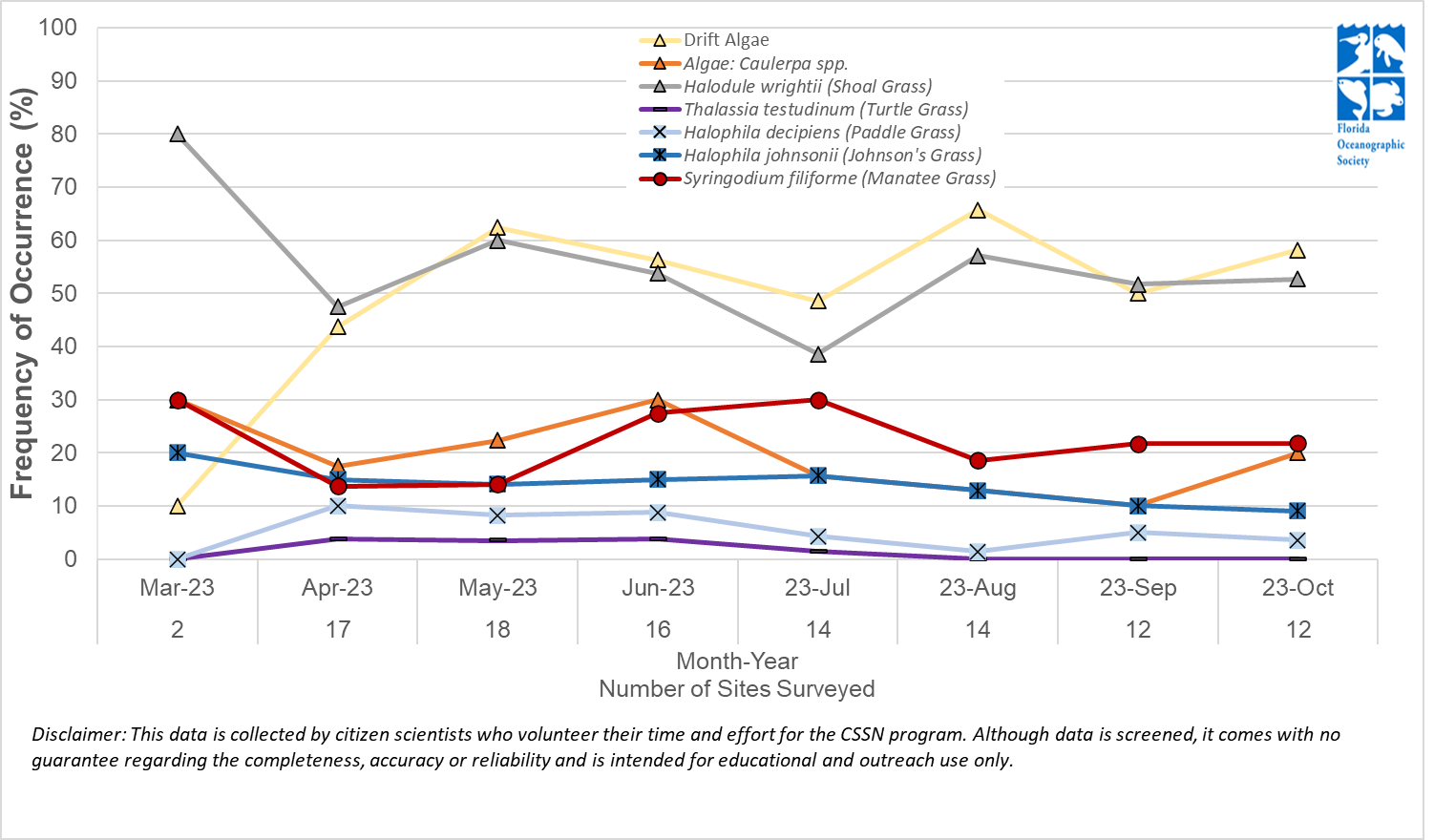F.O.S.T.E.R. (Florida Oceanographic Seagrass Training, Education and Restoration) is a community-based research and restoration program that seeks to restore and protect seagrass populations in the Indian River Lagoon, Florida.
Seagrass is vital to the health of Florida's waterways; it provides habitat, nurseries, and food for a variety of species. It also prevents erosion by stabilizing sediments, provides a long term store of carbon and improves water quality by absorbing nutrients. However, our seagrass populations are currently under threat from fresh water discharges, algal blooms and poor water quality.

As seagrass ecosystems are sensitive to changes in the environment they act as an important indicator of lagoon health. FOS staff and volunteers monitor survival and growth of both natural and restored seagrass beds in the lagoon.

Citizen Science Seagrass Network (CSSN)
With the help of our citizen science volunteers, we assess the condition of seagrass at multiple sites throughout the Indian River Lagoon and St. Lucie Estuary. This fills a needed monthly seagrass monitoring gap in our area! Our trained citizen scientists undertake coverage surveys of different seagrass species, Caulerpa algae and drift algae present at their site. Volunteers measure the canopy height and assess total site coverage through haphazard quadrats. Additionally volunteers record water quality metrics including water clarity and salinity which are crucial to the survival and growth of seagrass.
This program requires a monthly commitment from April-October. If you are interested in this opportunity please contact Volunteer Coordinator Rosemary Badger for more information.
Figure 1 : FOS monthly citizen science seagrass survey sites (pink circles) are shown against Indian River Lagoon Seagrass Community data from 2021, light-green areas indicate patchy seagrass coverage and dark green areas indicate continuous seagrass areas. (Credit to SFWMD Open Data, Dewberry, St. Johns River Water Management District, and South Florida Water Management District)
Latest Trends

Figure 2: Shows the Frequency of Occurrence which is the percentage of time a species was observed within quadrats across all sites in a month. The number under the month indicates the number of sites surveyed during that time period. Surveys are focused during the seagrass growing season (April - September).
Restoration Monitoring
We monitor our seagrass restoration projects for long-term survival and growth rates and study the impact of different methods on restoration success, including planting unit size, herbivore exclusion and co-restoration with bivalve species. Learn more about our restoration program HERE.
